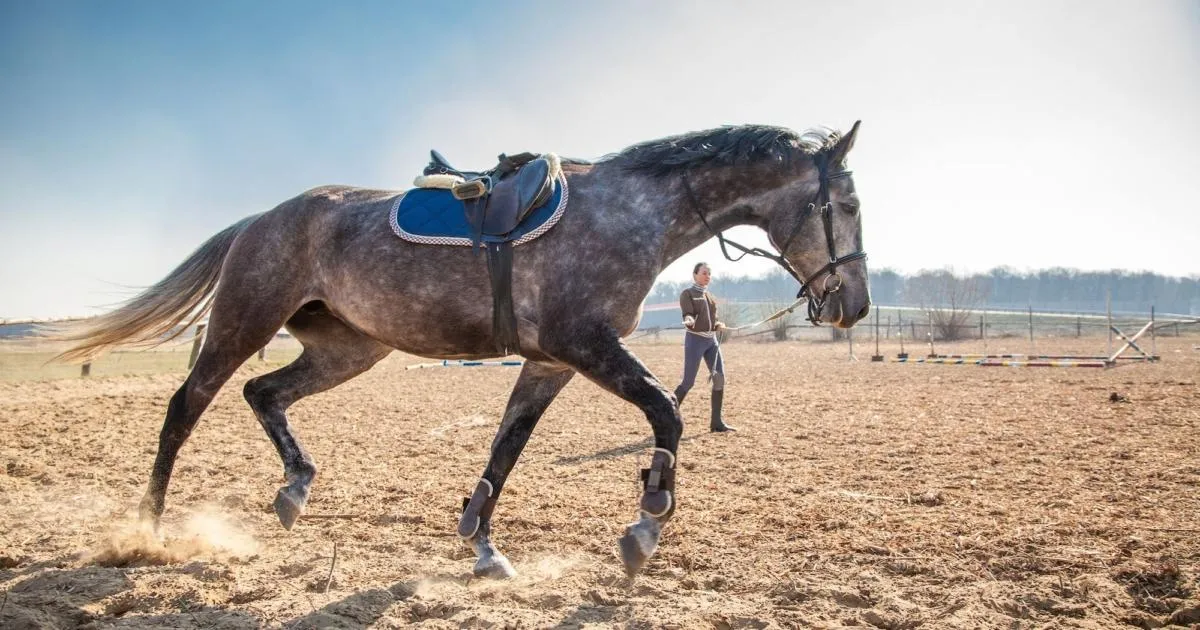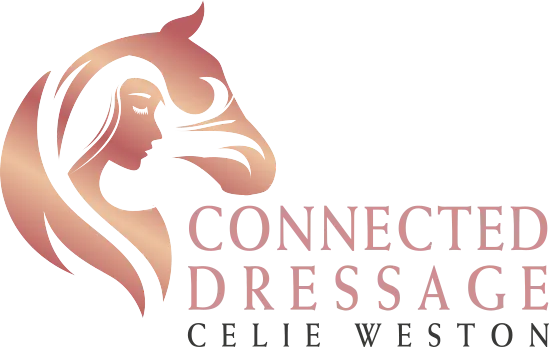
How to lunge a horse successfully
Lungeing a horse for respect and trust is part of creating a good solid training foundation. Most people lunge a horse to “get the buck” out or to make them tired before a rider gets on, but that doesn’t really serve any purpose towards enhancing the knowledge, clarity or training of the horse.
In fact when the horse is tired, most training opportunities are lost because the horse loses his ability to focus. Getting the buck out is also not a necessary thing to do once the horse is well behaved and has learned to think. Even fresh horses can learn how to control their energy when they’ve learned what is expected of them.
When lungeing is used to further the training level of the horse, it teaches the horse how to think, control his movements and emotions, plus creates straightness, self-impulsion, better self-carriage and, in the advanced form, can even be used to teach collection.
The common problem that I see when someone is trying to lunge their horse is that the horse keeps trying to turn in towards them. The horse will turn the forehand or look at the handler and then come to a full stop. Then the handler tries to get the horse going again by driving the horse close to the hindquarters, but this often just causes the horse to pivot and end up in the same situation.
Sometimes the handler tries to pull the horse forward with the leading hand, but still the horse ends up facing them and the whole cycle starts over because no driving aid is applied.
The step-by-step process that I have found to work with all horses is as follows:
Ask the horse from a standstill to move their feet. Don’t move your feet because then you are the one doing all the work, and it’s supposed to be the horse moving, not you. So don’t move your feet.
Point with the leading hand in the direction that you want the horse to go and take up some contact on the rope with that hand so the horse can feel a very light pull.
Direct your attention and energy towards driving the shoulder or the girth area forward. The girth area is where your leg would be if you were riding, so the aids are the same. But, if the horse isn’t turning to face the direction it should travel, you must first drive the shoulder sideways before driving at the girth. Otherwise, you will get a backup.
Face your feet forward in the direction of travel and walk a tiny circle. This sends the horse forward and you avoid following the haunches, which would make the horse turn and face you again.
Things that can go wrong:
Most handlers face their feet towards the horse and end up walking sideways. This is only useful if you want to push the horse out on a bigger circle.
Always face your feet forward and walk in line with the shoulders or the girth. If you have a tendency to back up as you turn, you will pull or urge the horse to make a smaller circle and end up with the horse on top of you or cause them to pivot and look at you.
Don’t follow the haunches. Whichever body part you are in alignment with will push that body part away from you. If you’re pushing the haunches away from you by following them, then the horse will also turn his forequarters towards you and end up on top of you. Not good.
When you follow the haunches, you also end up having to walk a bigger circle which is much more work. When you align with the shoulders you can walk a smaller circle and eventually stand completely still while the horse goes around you, as long as you stay aligned with the shoulders.
Don’t get in front of the shoulders. Getting in front of the shoulders cuts the horse off and they will stop and look at you.
The goal is always to have control of the horse’s speed, direction and gait. Once you teach the horse how to listen to your aids on the lunge you will also start to establish trust and respect.
Horses respect you when you can control where they put their feet. This is known as spacial awareness. They start to trust you when your cues are always reliable, stay the same and are clear cut.
So, if I ask a horse to move around me to the left, I will keep applying the same aid, sometimes with more volume until it happens, and take the aid away as soon as the horse does the right thing.
This is known as “pressure release”. Horses learn to understand and appreciate this if you are clear with your aids. The pressure release becomes a reward, and this teaches the horse to respond better and better and lighter and lighter and quicker to your aids, which allows you to make your aids more and more subtle.
I think this is where the feeling of “horse whispering” comes from. When you are so clear and have repeated it so many times so the horse has total clarity about what you want at all times, now your aids become so subtle that it seems as though you are whispering. This is mastership of body language, the language of the horse.
I hope this helps you establish a better foundation and partnership with your horse. If you are in doubt, don’t hesitate to contact me and I’ll help you figure it out.
Groundwork is so important in order to establish a truly deep understanding between you and your horse that translates into the saddle and improves your safety and handling by quantum leaps.
Go have some fun lungeing your horse today and apply these methods. If done right, I guarantee that they will work.
Ride with Lightness
Celie xo
Ready to get the help you need and excel on your lightness journey?
Sign up for a FREE Lightness Strategy Session Online with Celie.
Click on the link above to schedule!
© Copyright 2025 ArtfulRiding.com / Privacy Policy

